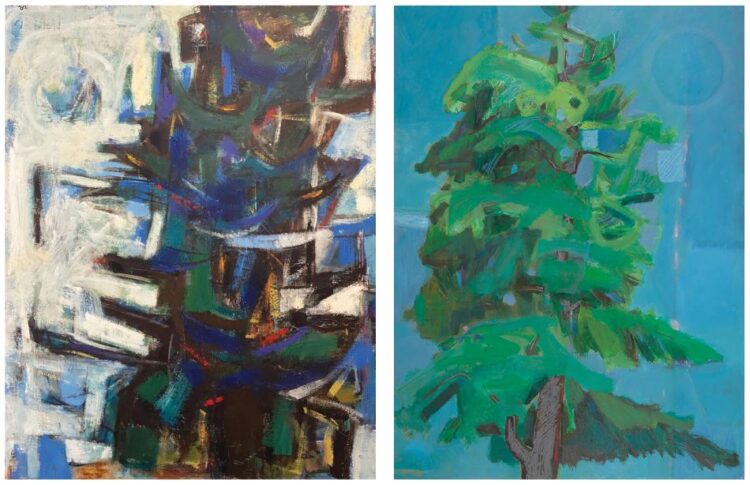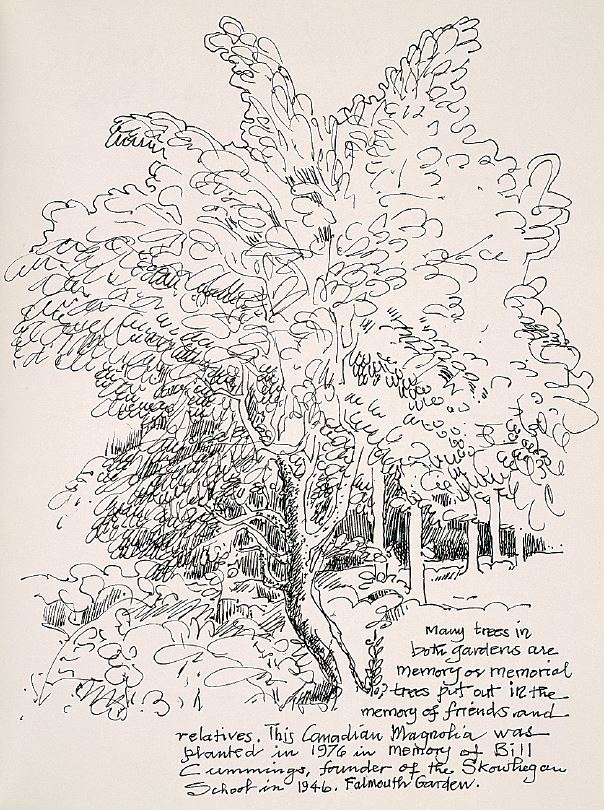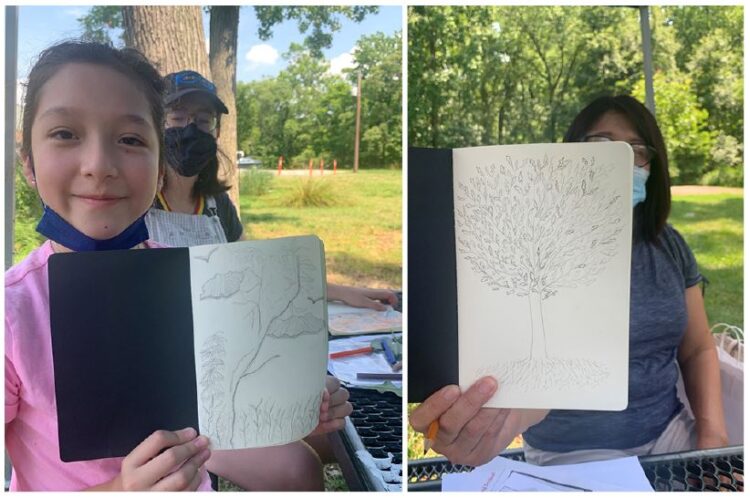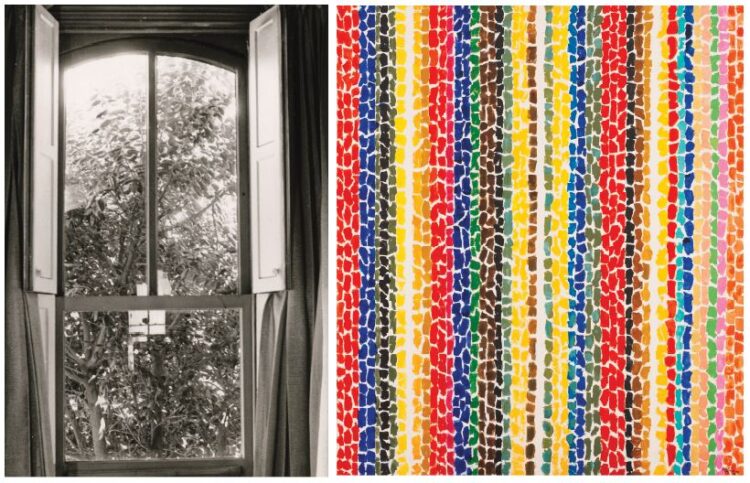This Thanksgiving holiday, spend some time with art and nature with this family-friendly activity inspired by David Driskell: Icons of Nature and History and Alma W. Thomas: Everything Is Beautiful.
1. IMAGINE
Close your eyes and imagine your favorite place.
- • How do you feel in that place?
- • What colors would you use to describe it?
2. CLOSE LOOKING
David Driskell was inspired by nature. Let your eyes wander over the two images.
- • What do you notice?
- • What are you curious about?
- • How has the artist captured a sense of place?

David Driskell, Winter Tree, 1962, Encaustic on canvas, 52 1/4 x 42 3/8 in., James E. Lewis Museum of Art, Morgan State University, Baltimore; David Driskell, Pine and Moon, 1971, Oil on Masonite, 47 3/8 x 35 1/8 in., Portland Museum of Art, Portland, Maine, Museum purchase with support from the Friends of the Collection © Estate of David C. Driskell
Driskell grew up in rural Georgia and North Carolina. In his art, he turned to nature for inspiration. He recalls how his parents’ “great respect for nature” shaped his artistic practice. His father was a minister, farmer, and carpenter, who also kept a garden. His mother was a quilter and foraged for medicinal herbs in the nearby woods. When Driskell moved to the city, he brought this love of nature with him by growing gardens at his homes in Hyattsville, Maryland, and Falmouth, Maine. The “massive pines towering towards the sky” outside his studio window in Maine inspired his many paintings of pine trees.
3. SKETCH
David Driskell recorded his observations of the natural world in sketchbooks. On the page shown here, Driskell sketched a Magnolia tree, adding a description of its history and location.

David Driskell, pages from The Garden Book of Maryland and Maine, c. 1998, Bound journal, 10 × 8 ½ in., Photo: Gregory R. Staley. Courtesy of the David C. Driskell Center at the University of Maryland, College Park. Collection of the Estate of David C. Driskell, Maryland
By using our own paper or sketchbook, we can observe and record beauty in the world around us. Take a walk in your neighborhood. Find one thing that inspires you—a leaf, a rock, a crack in the sidewalk.
Look closely. Draw what you see.
- • Why did you choose that object?
- • What does your drawing make you think about?
- • Write down your thoughts next to the drawing.

Check out these great sketches from a workshop at THEARC farm over the summer!
4. NATURE AND ABSTRACTION
Alma Thomas was also inspired by nature. She loved to look out her windows from her home in Washington, DC, to see the leaves change color in the fall, “tossing in the wind as though they were singing and dancing.” Thomas used color and abstraction to capture the sense of a place.

Ida Jervis, Alma Thomas’s front window, with holly tree, c. 1971, Gelatin silver print, 7 x 5 in., Alma W. Thomas Papers, The Columbus Museum; Alma Thomas, Breeze Rustling Through Fall Flowers, 1968, Acrylic on canvas, 57 7/8 x 50 in., The Phillips Collection, Gift of Franz Bader, 1976
Let’s experiment with abstracting the object from nature you just sketched. Try one of these approaches to make your drawing more abstract.
- • Focus in on one section of the drawing and enlarge and/or crop it
- • Color your drawing with non-representational colors
- • Imagine how your drawing/object might look from really far away, up close, or through a kaleidoscope
Visit David Driskell: Icons of Nature and History (through January 9, 2022) and Alma W. Thomas: Everything Is Beautiful (through January 23, 2022) for more inspiration!
